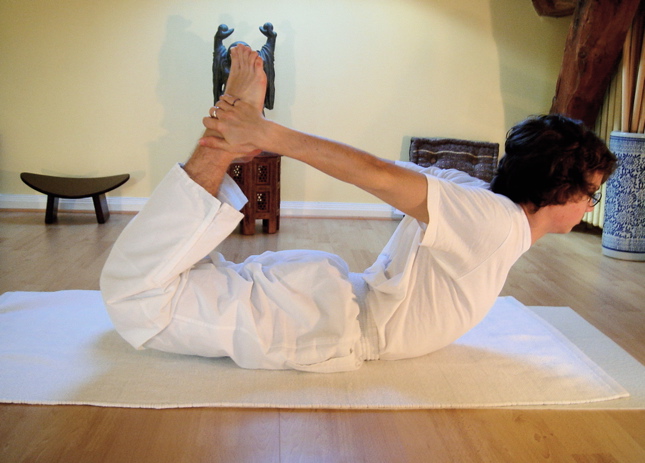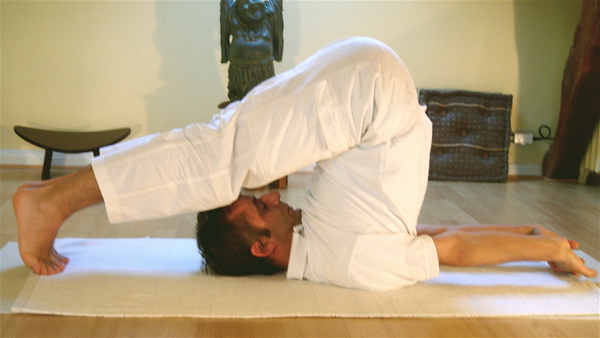
The yoga poses which are done by keeping your back on the floor of near the floor are called supine poses or the poses done by ‘lying face upward’. Such poses manly provide exercises to the leg and hand muscles. In some of the poses the abdominal muscles and spine are also twisted and get much strain.
Fish Pose, Matsyasana
While doing any of the above poses, you are to keep one important point in mind: do not overstretch your body. Know the limit of your body and remain within that limit. If you find doing any of the poses difficult, do consult the trained yoga teacher. If you use proper yoga accessories, you would make the yoga experience joyful and helping.
Do try Doing These Supine Yoga Poses
- Bridge Pose: When we do this pose, the pelvic muscles are stretched to its greatest length. This pose provides adequate exercise to many muscles like : the pelvic, abdominal and leg muscles. The spinal cord would be bent slightly while doing Bridge Pose or the Dwipada Pitham.
- Plough Pose: This pose helps us stretching the muscles of our waist. So it improves the functioning of our veins. Moreover, it help giving adequate exercise to other parts of the body, too. While doing Halasana, our spine is stretched in full. It keeps the spine very elastic. If we do this pose regularly, the overall function of the spine is improved greatly.
- Pavanmuktasana, Wind Releasing Pose: If we do this posture regularly after waking up from the sleep in the morning, it would help in regulating the movement of the gases present in body. It would be much beneficial if you do this pose in early morning. Important point to be noted is that this pose is to be done before taking any food or drink.
- Urdhva Dhanurasana, Reverse Bow Pose: This posture provide greater stretches to the back muscles. It helps keeping back flexible and the spinal cord smoothly. Its regular practice provides help in that respect. The leg and shoulder muscles are strengthened to its fullest length.
- Shoulder Stand Pose: This is also called sarvangasana. It benefits our body and mind in several ways. Doing this asana only the face remains upward. The whole body is placed on the strength of the shoulders only. It increases the flow of blood to our brain, and thus it would help in increasing the memory power.
- Corpse Pose : Known as Shavasana or Relaxation Pose, this posture is done before and after doing a posture. It follows the meaning of its name and provides adequate relief to all the limbs of our body. If it is done before going to sleep, this pose helps in getting immediate and a deep sleep.
While doing the above poses your face would be upward. It would put your neck downside. If you feel any pain in your neck, your should use a Yoga Bolster or Yoga Cushion below your neck. It would make you feeling comfortable. You can buy a good quality bolster or the cushion from a departmental stores that sells yoga accessories like yoga mat.(Image courtesy By http://theholisticcare.com [CC-BY-3.0], from Wikimedia Commons)

 11:06 PM
11:06 PM
 abhi
abhi










